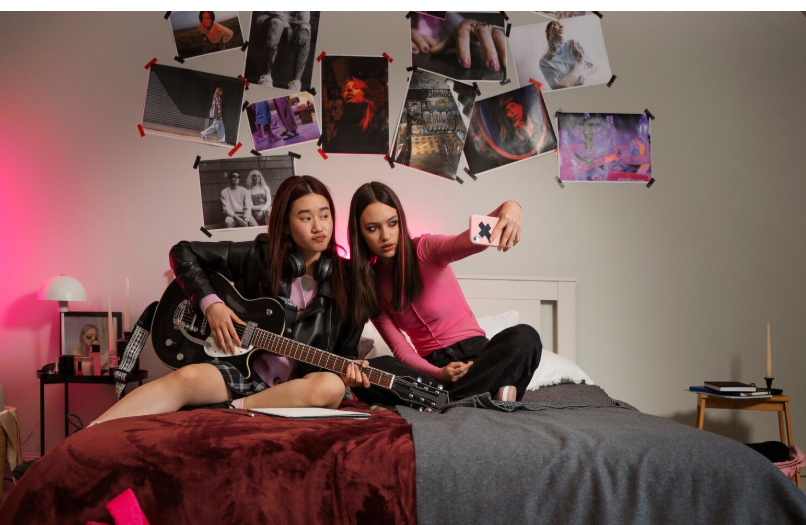It started out softly, with only a bedroom microphone and a looped beat. Without giving it any thought, a 22-year-old producer posted a 15-second clip. A few days later, their song was playing in the background of Dallas makeup makeovers, Madrid morning rituals, and emotional storytimes in Jakarta. That musician was found, approached by labels, and launched into an entirely new professional league almost immediately. This isn’t merely a fortunate coincidence. Thousands of creators are using this incredibly successful model to redefine music discovery.

TikTok eliminates the layers that rely on playlists or followers, in contrast to other services. Its incredibly transparent algorithm starts engaging as soon as a person interacts, without waiting for popularity. Songs that are incorporated into short videos become active catalysts rather than passive background music. Every posting might set off a chain reaction of meme integrations, dance challenges, and remixes. For independent artists who may not have connections but are aware of timing and presentation, this setting is especially helpful.
Key Elements Behind How TikTok Turned Bedroom Beats Into Billboard Hits
| Element | Description |
|---|---|
| Platform | TikTok (short-form video, sound-focused user experience) |
| Discovery Method | Algorithmically driven content exposure based on engagement and audio |
| Artist Tools | Music uploads, duets, trending hashtags, video remixes |
| Viral Catalyst | 15-second clips used in dances, tutorials, storytimes |
| Success Stories | Lil Nas X, PinkPantheress, JVKE, Ice Spice, Steve Lacy |
| Industry Shift | Traditional labels now monitor TikTok trends for talent scouting |
| Fan Participation | Remixing, lip-syncing, emotional storytelling using original audio |
| Revenue Path | Streaming surges → Chart inclusion → Label attention |
| Global Strategy | VPNs used by indie artists to test visibility across borders |
TikTok has developed into a global music platform. The audio loops that start each clip spread like sparks in parched grass. TikTok has become the main way that Gen Z, who are far quicker at adjusting to digital culture, finds new music. In 2025, the platform accounted for more than 75% of this group’s new music discoveries. For independent creators who were previously unknown to traditional organizations, this dramatic change in behavior has significantly increased visibility.
Tens of thousands of followers may switch to Spotify, YouTube, or Apple Music as a result of a TikTok moment that becomes viral. These surges have a direct impact on the Billboard charts in addition to inflating streams. When fans interact with a sound, they are more likely to look for the whole version. Eventually, that exposure leads to record agreements, playlist inclusions, and digital sales. The entire music funnel has moved upward, beginning with a casual post rather than studios or radio.
This redesigned path was originally used on a large basis in Lil Nas X’s “Old Town Road.” The song, which only cost $30 to produce, gained popularity thanks to TikTok’s dancing and meme culture. The clip’s momentum became self-sustaining once it started to acquire traction. Organic momentum now takes the place of news releases, marketing expenditures, and tour plans. A wave of artists, including PinkPantheress and JVKE, have been influenced by this tendency to focus on DIY storytelling combined with sonically captivating footage.
For example, PinkPantheress posted bits and pieces rather than just songs. Her subdued UK garage-inspired compositions stood out for their emotional impact beneath video diaries and nostalgia edits. In a similar vein, JVKE used repetition to create a mini-movement out of his song “Golden Hour.” In order to ensure that TikTok’s technology recorded constant engagement, he strategically uploaded it across a variety of content genres, such as piano lessons and behind-the-scenes montages.
The result? While keeping creative control, he charted on Billboard and crossed into millions of streams. The goal of this technique is to develop a sound identity that flourishes in a dynamic ecosystem, not only to become viral. His strategy is now frequently used as a case study by newcomers who want to emulate this success.
Ice Spice is yet another outstanding example. She seemed perfect for remix culture thanks to her conversational style and catchy jokes. Her early efforts were unlabeled, and she became well-known through trending videos and funny overlays. Not radio spins, but TikTok’s amplification propelled her development on both an artistic and professional level. Instead of the other way around, industry execs were forced to seek out as fans continued to share her clips.
That power reversal is especially creative. Before scheduling signings, record labels now check the app every day for rising sounds. In order to pre-seed songs on TikTok, entire marketing departments have adjusted and invested in influencer partnerships. A&R teams now search using hashtags like #NewMusic or #SoundOfTheDay instead of the previous paradigm, when they found talent in smokey venues or local battles.
Even superstars are influenced by it. After being transformed into a dance by a TikTok user, Beyoncé’s song “Cuff It” gained fresh life. One of the most TikTok-native singers, Doja Cat, has frequently used dance edits and meme skits to preview her songs. Her appearance has been purposefully designed to capitalize on the same cultural feedback loop that independent artists rely on.
This implies that TikTok is a scoreboard for unsigned artists rather than merely a launching platform. All likes, shares, and saves are considered data. In terms of assessing potential, these indicators now compete with conventional press reviews. In a time when music promotion is dominated by digital-first tactics, TikTok’s real-time feedback is incredibly effective. In essence, it’s entertainment masquerading as market research.
VPNs and other incredibly flexible tools give artists even more freedom to explore foreign markets. By using a VPN, a producer from London can mimic Brazilian exposure and check to see if their music resonates in Latin markets. Ten years ago, this kind of agility was practically unthinkable. It is now a standard component of pre-release preparation. Artists may create content specifically for audiences by knowing which markets are most relevant to them, which increases both connection and conversion.
This change has an emotional undertone as well. It feels more personal than ever to share music made from bedrooms on cellphones. Hearing shaky vocals or seeing unpolished recording setups has a disarmingly human quality. The worth is not diminished by the lack of polish; on the contrary, it increases relatability. Deep connections are fostered by that human touch, which is reflected in hundreds of thousands of user-generated movies.
